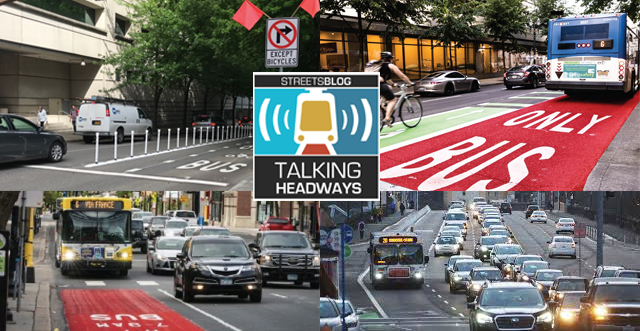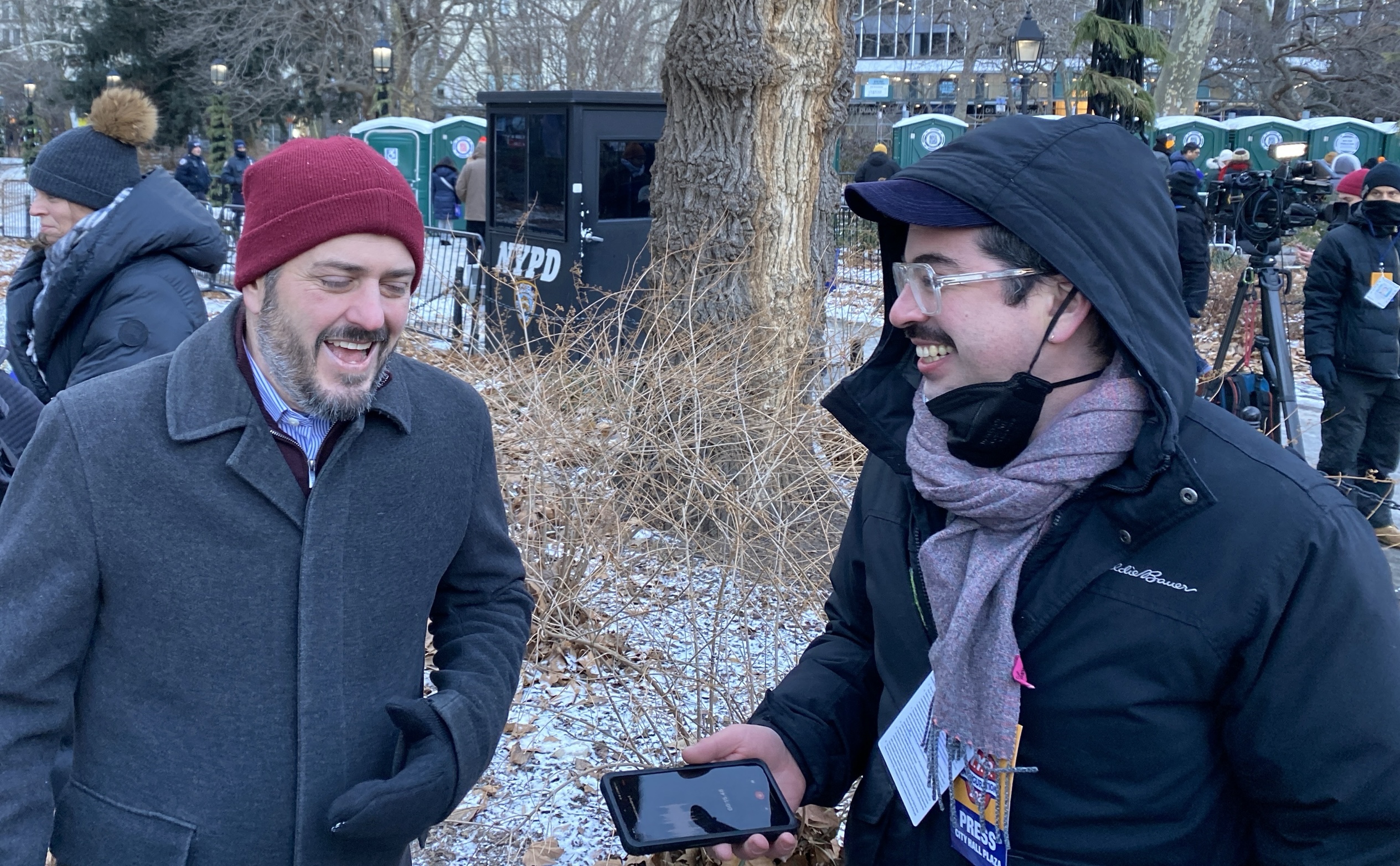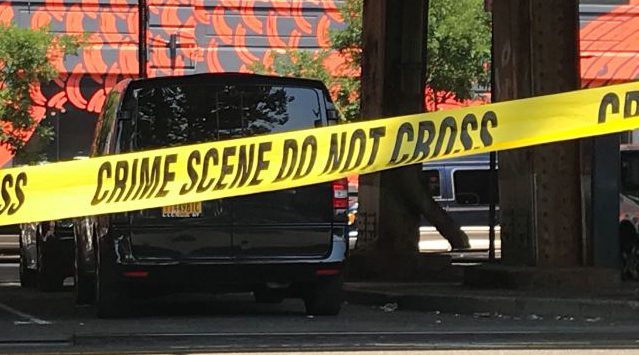This week, we're joined by April Bertelsen, Transit Modal Coordinator with the Portland Bureau of Transportation to talk about the Rose Lanes project, which are transit priority treatments that aim to get buses and streetcars out of traffic [PDF]. Bertelsen chats about implementation, public engagement, and the benefits of the pilot project approach.
If you prefer to read rather than listen, there's an excerpted transcript below the audio player:
Jeff Wood: The program focuses on targeted interventions instead of large capital projects. And I'm wondering, when the switch came to thinking about those, I'm curious when the switch came to think about those targeted interventions rather than say building one big capital project along each corridor, for example.
April Bertelsen: It was growing as we were doing the enhanced transit corridors plan and we were also in the midst of our Division Transit Project, which is a corridor-based BRT focused on a transit line connecting from Portland to Gresham and through the city and including East Portland. So that is a major capital project that is now under construction and we are looking forward to opening day, but it's taken a lot of time and resources to get there.
And given the urgency of our times, we want to bring about more change and make transit better faster than we could do if we were going one corridor at a time — plus thinking about it as a network and what can we do short term across that network to address where transit is most delayed and where are the most passengers on transit are most delayed. And could we bring about more benefit quicker? I think a part of our broader plan over time among some of those lines to go back and pursue more corridor-based projects to take them even to the next, the level of better transit, but that we shouldn't and we couldn't wait to start making many of these places better now and pinpointing where that delay is greatest.
And part of that is driven by where there is delay for multiple transit lines. And so if we can fix those bottlenecks, there is a broader network benefit that spreads out just by addressing one bottleneck. And the more recent ones have been bridgeheads — and so if the three lines or more that then spread out to different parts of the city, that benefits spreads. And so we're trying to pinpoint those most valuable, if you will, bottlenecks to address to have the greatest benefit.
JW: What are some of those interventions that you're doing to address those bottlenecks specifically?
AB: Some of the early projects that we did, our big three or early big wins that were implemented through our Central City in Motion project, which was focused on the the central city: walking, biking and transit to make them safer and better. We identified the three bridgeheads that had multiple transit line crossing each of those bridges and that those were points of great delay. We then landed on a different treatment option in each case and were incrementally implementing this now and then we plan to take it to the next level, extending even more with the Rose Lane project pilots.
But to that point, on the Burnside Bridge. We're able to work with our partners at Multnomah County to dedicate a lane eastbound headed out of the central city to a bus only lane. And then on the bridgehead ends on either end, where it goes back onto city streets, we are looking at implementing a business access and transit lanes so that will still allow local access to the adjacent properties and local streets. So in that instance it's the bus only lane. At another bridgehead, approaching the bridge where the delay was the most, we have now a sort of shared bike and bus facility. I would call it advisory bike lane and bus lane. So it's wide enough for both to be there parallel, but it's dashed because it's not wide enough to be the best facility for separation. It's a downhill four-block stretch and I think it's working pretty well. And the buses are much faster and more reliable now.
So that's one example. And then we have another one, approaching the Steel Bridge, we converted a travel thing to a business access and transit lane approaching the bridge for about six-block stretch.The other two were linked conversions and it was a bold and effective move.






